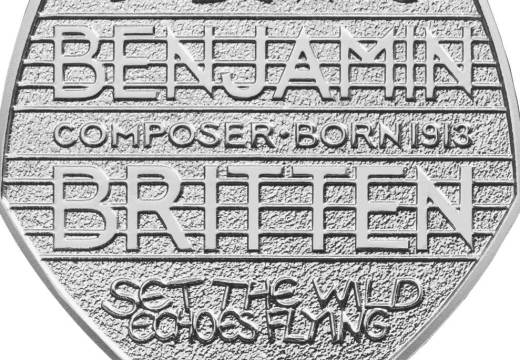From the May issue of Apollo: preview and subscribe here
The banner reading ‘Fondation Custodia’ is a recent addition to the façade of no. 21 Rue de Lille in Paris. Until two years ago the Hôtel Lévis-Mirepoix, five minutes’ walk from the Musée d’Orsay, was better known to Parisians as the home of the Institut Néerlandais, and the foundation tucked discreetly into the Hôtel Turgot behind remained a relatively well-kept secret. But with the closure of the Dutch cultural institute in 2013, the foundation has stepped into the spotlight.
Both institutions were the inspiration of one man, the legendary Dutch connoisseur and collector of works on paper, Frits Lugt (1884–1970). Lugt moved his collection to Paris in the mid 1950s after a wartime experience of seeing his former home in The Hague confiscated by the Germans and the works that were left in it seized and sold to the Führer Museum. Behind the stout Haussmannian façade of the Institut Néerlandais, the elegant Hôtel Turgot – built by a finance minister to Louis XVI – was the perfect home for a vast collection that, around a core of works on paper of the Dutch Golden Age, also holds drawings, prints, cabinet paintings, artists’ letters, portrait and Indian miniatures, 16th-century Dutch stained glass, Greek, Roman and Egyptian antiquities, and books. And thanks to an endowment made by Lugt and his wife Jacoba Klever, it remains almost exactly as they left it.
Almost, but not quite. The Fondation Custodia is still filling gaps in its collections and its knowledge of them. Despite being a compulsive cataloguer who inventoried the Louvre’s collection of Dutch and Flemish drawings, Lugt never got around to cataloguing his own. Under the foundation’s current director Ger Luijten, lured from the Rijksprentenkabinet in 2010, work on the collection proceeds apace. Eleven thousand prints and drawings were digitised last year. Luijten is also expanding the exhibition programme in the Hôtel Lévis-Mirepoix with offerings such as the current show of ‘Italian Drawings from the Städel Museum, Frankfurt’ (until 21 June), aiming simply ‘to serve Paris with the best drawings’. And he has opened the basement to exhibitions of contemporary draughtsmen such as Gèr Boosten, currently pitting his theatrical visions against those of Michelangelo, Titian and Pontormo upstairs.
The foundation’s ethos, however, remains unchanged. It continues ‘to serve art history’ in the spirit of its founder, who believed in bringing the art of the past to life by recreating the original conditions in which it would have been seen. While the store lined with boxes containing the collection’s 30,000 prints – 200 Rembrandt etchings among them – and autographs – including illustrated letters by Dürer and Van Gogh – looks thoroughly modern, the strong room Lugt called his ‘sanctuary’ is a time capsule. Here 7,000 Old Master drawings are kept between the leaves of leather-bound collectors’ albums. A researcher wishing to consult a fabric study by Leonardo will find it tucked between the pages of a vellum-bound volume once in the collection of the Medici. What is more, they will examine the drawing on an antique table in the 18th-century oval drawing room in natural light from the French windows giving on to the garden.
Since Luijten’s arrival there has been some quiet modernisation, such as the rewiring of the formerly fire-hazardous print store. Other changes have been more striking. The staircase is now beautifully hung with a luminous collection of 19th-century French, Danish and German plein air oil sketches – bequeathed in 2009 by the foundation’s former director Carlos van Hasselt – to which Luijten is judiciously adding. The oil sketches on paper form a natural complement to the drawing collection: it all hangs together.
In July, when the Terra Foundation of American Art moves its Paris headquarters into the Hôtel Lévis-Mirepoix, the Custodia’s international links will grow stronger still. The only cloud on the horizon, for Luijten, is anxiety about the curatorial succession.
‘Art history today is very conceptual,’ he says. ‘Curators need to develop a talent for care of collections.’ To nurture that talent the foundation is creating a ‘curator-in-training’ post with the Rijksmuseum, offering a year’s experience at each institution.
The Fondation Custodia will receive any researcher, collector, artist, student or enthusiast who makes an appointment to visit. There is nowhere like it. At his interview, Luijten was asked why he would want to leave the Rijksmuseum for the Custodia. He gave the Rijksmuseum 10 out of 10 for job satisfaction, but added that he would like to prove that 11 out of 10 was possible. Stepping inside this extraordinary place, one is inclined to believe that it is.
Click here for more information on the Fondation Custodia















![Masterpiece [Re]discovery 2022. Photo: Ben Fisher Photography, courtesy of Masterpiece London](http://zephr.apollo-magazine.com/wp-content/uploads/2022/07/MPL2022_4263.jpg)
Suzanne Valadon’s shifting gaze